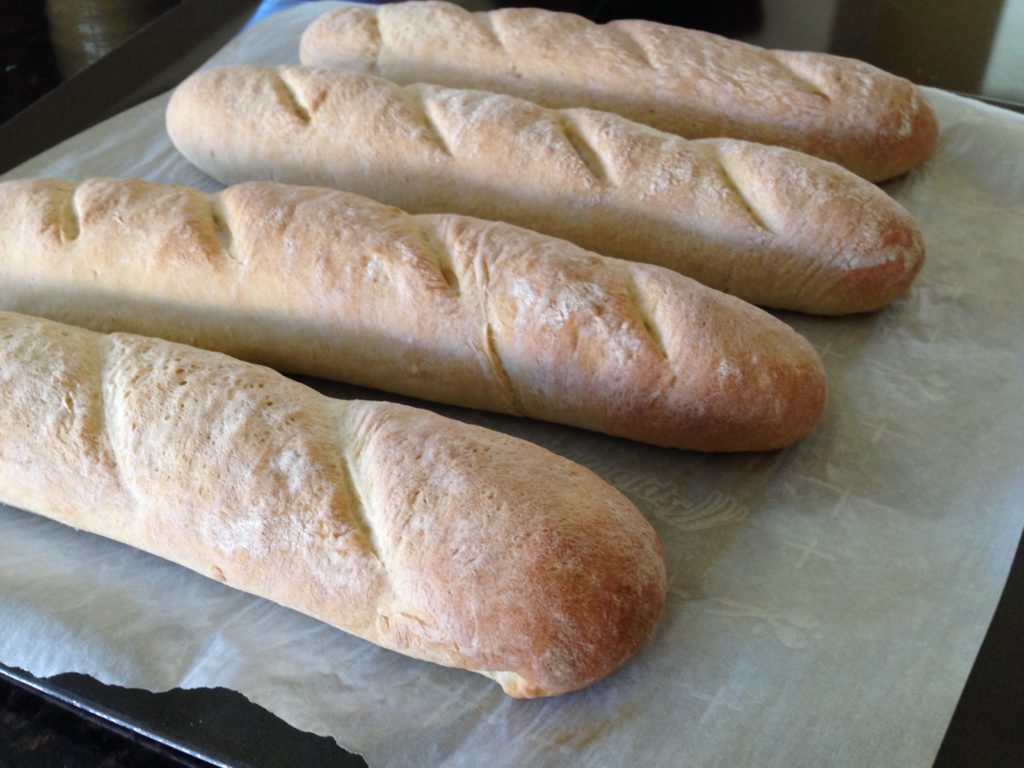
After watching hours of The Great British Baking Show, I needed to try Paul Hollywood’s baguette recipe. I looked it up on the BBC’s website, and then used Google to convert the recipe from European measurements to US measurements. The recipe called for 10g of instant yeast. For my first attempt, I used one packet of Fleischmann’s Active Dry Yeast. A yeast packet only contains about 7g of yeast. The results were not good. I managed to bake four small baseball bats, with very hard crusts and very little rise yielding really dense, almost inedible bread. So I ordered SAF Instant Yeast from Amazon, so I could measure out 10 g of yeast for my second attempt.
I have to make a few comments about the SAF Instant Yeast. Although the packaging includes both English and French writing, the fine print indicates that the yeast is produced for a company in Wisconsin, and manufactured in Mexico. Huh. I thought I was buying real French yeast, which would surely be the thing I needed to make real French baguettes. After carefully scouring the company website, I see that the company is French. But now I have a pound of instant yeast, and although I haven’t calculated how much bread I’ll have to make to use it up in the next 12 months before it starts to degrade, I know it’s a lot. I’m storing it in the fridge for now. And searching the yeast website for a bread recipe for next week.
Here is my American translation of Paul Hollywood’s baguette recipe.
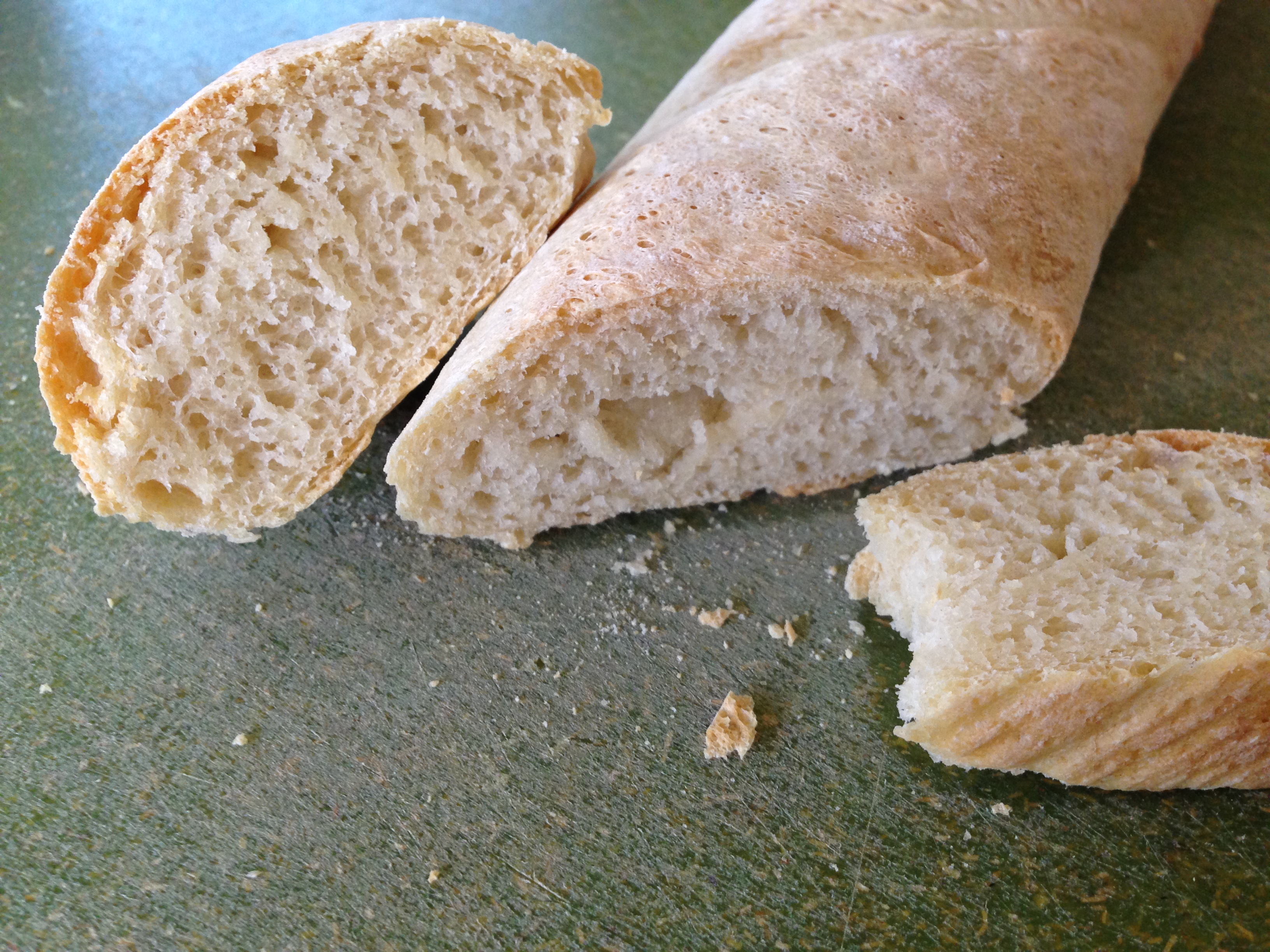
Baguettes
Ingredients
- 4 cups bread flour
- 3 teaspoons instant yeast
- 2 teaspoons salt
- 1 ½ cups warm water 105°F to 115°F
Instructions
- Mix dry ingredients and three quarters of the water in a stand mixer using the dough hook. This time I heated the water a bit to help the bread rise.
- Continue mixing on low speed, slowly adding the remaining water until a dough forms on the dough hook and the sides of the bowl are clean. Continue kneading on slow-to-medium speed for 7 minutes.
- Remove the dough from the dough hook, and transfer to an 8x8 inch square baking pan which has been oiled on the inside. Flip the dough to coat on all sides with oil. Flatten the dough into the shape of the baking pan, and allow it to rise for 1 hour or until doubled in size.
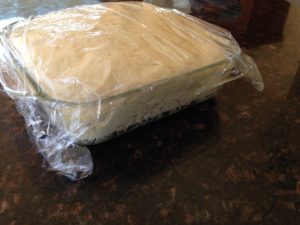
- After it rises, turn the dough out onto a floured surface and make three parallel cuts dividing the dough into four loaves. Flatten each dough log slightly, then fold the long sides toward the middle and press the seam until it seals. My loaves were already about 12 inches long, so I moved them carefully to a parchment lined baking pan.
- Cover again and let the loaves rise for another hour, or until doubled in size.
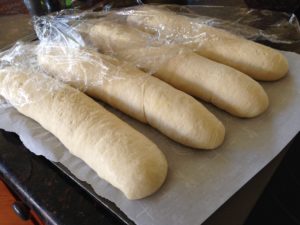
- Preheat your oven to 400°F, and place a pie pan on the bottom rack. My convection oven automatically reduced the heat to 375°F because I was using convection (fan in British).
- Before you put the bread in the oven, pour about ¾ cup of hot water into the pie pan to create steam which will help create a crunchy crust.
- Bake the bread for 25-28 minutes.
This bread was clearly an improvement over my first attempt, with significantly larger and less dense loaves. However, the crust was still not quite right. My loaves were clearly too close together in the oven because the outer surfaces were crusty but the inner edges of the loaves were squishy and soft. For the parts of the crust that were crunchy, the crust was thicker than I would like, and kind of tough. That may be all I can get with a home oven rather than a commercial one, but I’m going to research a bit more and try one more time next week. I’ve got a lot of yeast to use up!
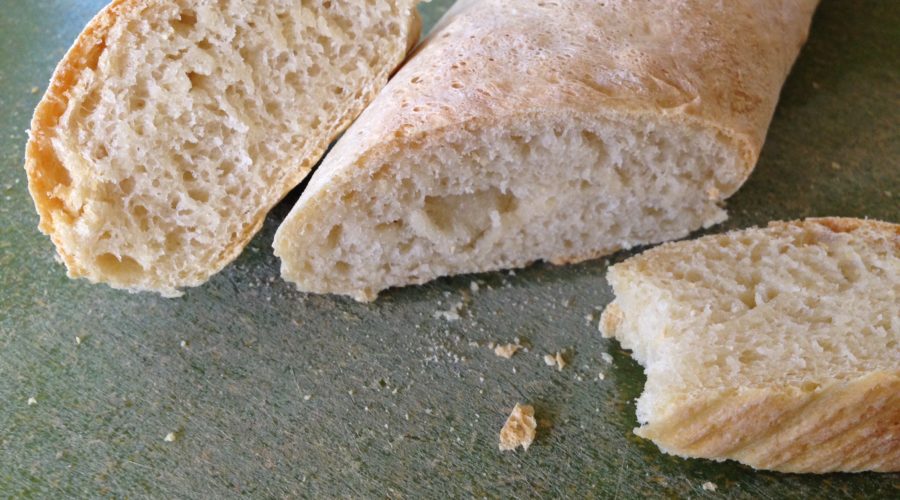
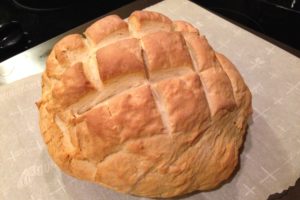
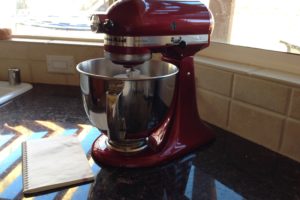
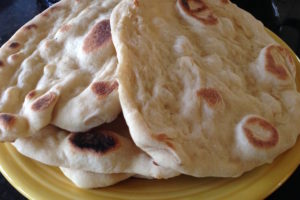
Leave a Reply
Your email is safe with us.